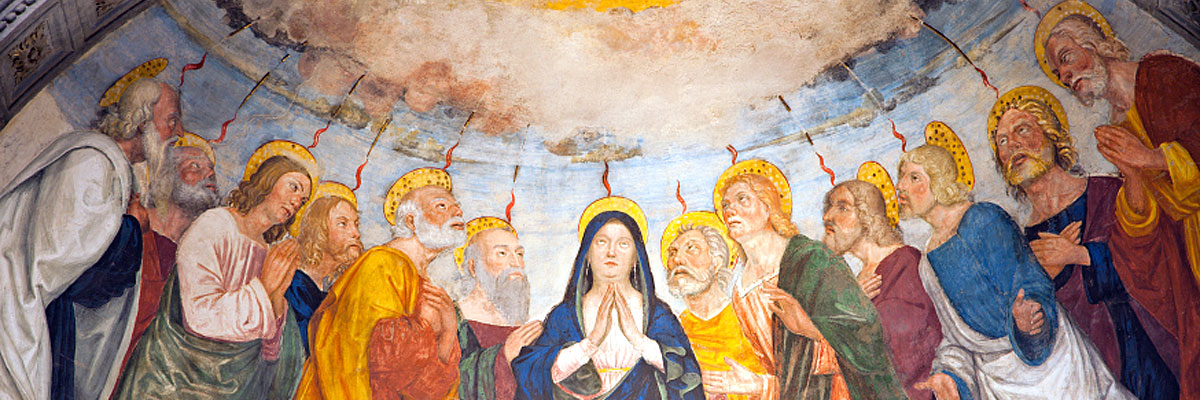
Understanding Our Church
A Treasury of Arkansas Writers Discussing the Catholic Faith
Official Website of the
Catholic Diocese of Little Rock
Our Lady of Sorrows inspires compassionate companion on journeys
Published: September 18, 2021
By Betsy Wiederkehr Huss
Blessed Sacrament Church, Jonesboro
Have you ever felt sorrow? That deep, body-wracking pain that can numb the mind, body and spirit? The circumstances from which we can feel this sorrow vary, but it is real and a part of life. Sorrow is not just being unhappy. It is a more profound, colossal sadness. It is almost unbearable. Yet, it is a valuable component in our repertoire of emotions.
Sorrow, as defined by Oxford Languages, is “a feeling of deep distress caused by loss, disappointment or other misfortune suffered by oneself or others.” Mary, in one of her many titles as Our Lady of Sorrows, has experience with these. In fact, a devotion, The Rosary of the Seven Sorrows (Dolors) of Our Lady, began in the 14th century, recounting how Mary suffered involving her son, Jesus. The Servite Order promoted this rosary, especially during the Black Death.
Pope Pius VII compiled “The Litany of the Seven Sorrows of Our Lady” while captive during the Napoleonic Wars. In 1981, Mary started appearing to Marie Claire Mukangango in Kibeho, Rwanda. Mary designated Mukangango’s mission as sharing with the world how to pray the Seven Sorrows Rosary, which has penitential aspects. Its popularity increased again because, in 2001, the Catholic Church approved these apparitions.
As Catholics, we know that conversion can happen in the most unlikely places, even at death. We believe that Christ can work on the hardest of hearts, that even the greatest of tragedies can become a vehicle for grace.
Its basic prayerful components are an Act of Contrition; announcing and meditating on a Sword of Sorrow; then one Our Father, seven Hail Marys and an invocation (praying these after each announcement of a Sorrow); concluding with three Hail Marys dedicated to Our Lady of Sorrows’ tears. Where did the “sword” come from? Simeon, after taking Jesus in his arms and blessing the holy family, says to Mary, “Behold, this child is destined for the fall and rise of many in Israel, and to be a sign that will be contradicted (and you yourself a sword will pierce) so that the thoughts of many hearts may be revealed.” (Luke 2:34-35)
According to the footnote in the Little Rock Catholic Study Bible, “Mary herself will not be untouched by the various reactions to the role of Jesus.” (2:34) The Memorial of Our Lady of Sorrows is Sept. 15. Mary’s Swords of Sorrows are as follows: 1. The prophecy of Simeon (Luke 2:34-35); 2. The flight into Egypt (Matthew 2:13-15); 3. Mary seeks Jesus lost in Jerusalem (Luke 2:41-51); 4. Mary meets Jesus on the way to Calvary (Luke 23:26-31); 5. Mary at the foot of Jesus’ cross (John 19:25-27); 6. Mary receives the body of Jesus (John 19:38); and 7. Mary witnesses Jesus placed in the tomb (Luke 23:53-55). During the Memorial Mass of Our Lady of Sorrows, “Stabat Mater” (The Mother was Standing), may be sung. This hymn describes the sorrows of Mary at Jesus’ cross.
He bore our sins, and she suffered too as his compassionate, holy and empathetic mother. Can you feel her sorrow? Though no words of Mary’s are recorded at the cross, as a mom, I feel sure she communicated many things to him: through her loving gaze and heart, by her being there with him in his pain and sorrow. He knew her love. May we pray for courage and empathy concerning those we encounter who are in pain, sorrowing. To not run away. To look them in the eye. To be available. To be present. To be open to the Holy Spirit’s promptings. Yes, to journey with them in their pain, suffering and sorrow, for this is a part of life. Our Lady of Sorrows, pray for us.
Betsy Wiederkehr Huss has a master’s degree in theology and has been involved in ministry to all ages for 36 years. She and her husband Martin are studying in the diocese’s diaconate formation program.



